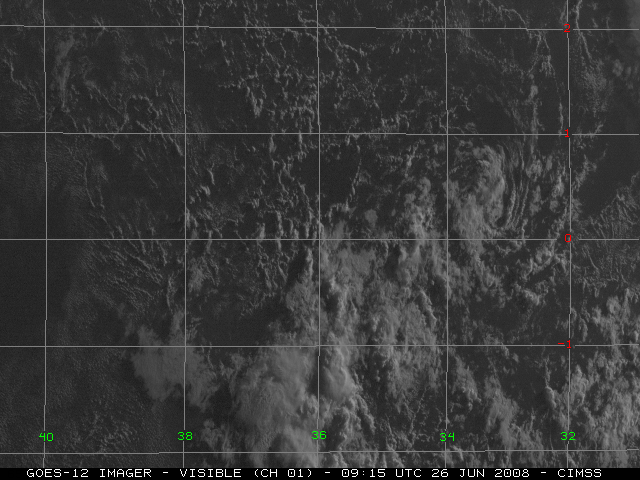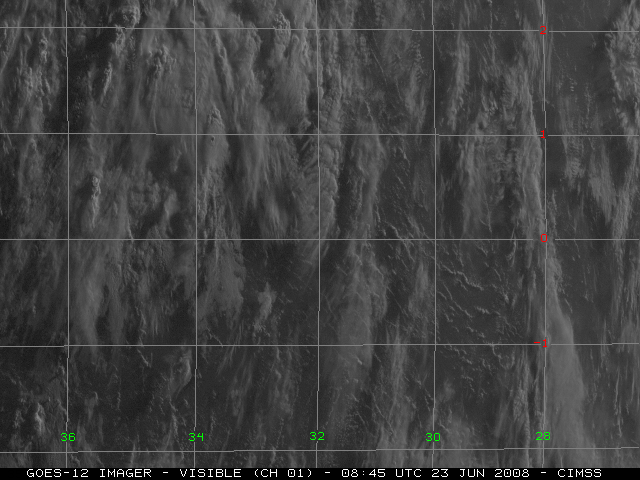Clockwise-rotating vortex over the tropical Atlantic
Tony Cristaldi at the National Weather Service forecast office at Melbourne, Florida pointed out an interesting feature to us: a clockwise-rotating vortex over the Atlantic Ocean, located just north of the Equator off the northeast coast of Brazil. An animation of GOES-12 visible and 3.9 µm shortwave IR images (above; QuickTime animation) shows the feature as it moved westward on 26 June and 27 June 2008 (producing brief pulses of convection on both days). So, the Question of the Day is: if this was a Mesoscale Convective Vortex (MCV) that was spawned by convection over the tropical Atlantic Ocean, and it was found in the Northern Hemisphere, then wouldn’t such a feature be expected to exhibit a counterclockwise (or “cyclonic” in the Northern Hemisphere) rotation?
The answer to that question (provided via email from the bright minds of Brian Etherton at the University of North Carolina at Charlotte and Brad Barrett at the University of Oklahoma): since this mesoscale circulation possessed a small radius of curvature (implying a large Centrifugal Force) and was located near the Equator (implying a small Coriolis Force), then the flow (as governed by the Gradient Wind Balance equation) would be cyclostrophic (a balance between only the Pressure Gradient Force and the Centrifugal Force) — so the direction of flow into such a circulation could be either cyclonic (counterclockwise in the Northern Hemisphere) or, as in this particular case, anticyclonic (clockwise in the Northern Hemisphere).
In an attempt to identify the source of this curious vortex, we examined GOES-12 visible and shortwave IR imagery at 3-hour intervals during the 23-27 June period (below; QuickTime animation). The imagery seems to suggest that the source of the vortex may have been an area of convection over the tropical Atlantic Ocean, which developed just south of the Equator (centered around 1.5º S / 28.0º W) on 24 June. This convection produced a well-defined outflow boundary, which could be seen propagating northwestward on the 11:45 and 14:45 UTC visible images on 24 June. The vortex first becomes apparent on the 17:45 UTC visible image on 24 June, located some distance behind (south of) the aforementioned outflow boundary. From that point, the vortex is then difficult to follow due to other cloudiness in the region, until it is again obvious on the 11:45 UTC visible image on 26 June (located near 0.5º N / 33.5º W). After 26 June, the feature is more easily tracked using the 30-minute interval images shown above.



